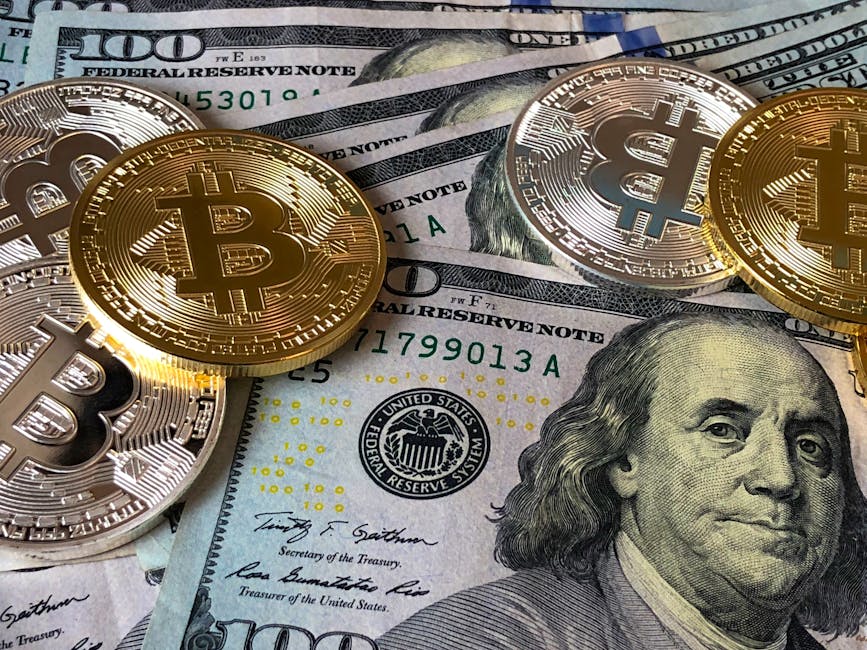What Cryptocurrency Actually Is (No Fluff)
Think of cryptocurrency as digital money but without a bank in the middle. Instead of being printed or managed by governments, it’s created and tracked using something called blockchain—a sort of public, digital ledger that everyone can view but no one can cheat. That’s it. You don’t need to understand the code behind it to grasp the big picture: crypto is just money you control yourself, stored online.
Now, the key differences between crypto and traditional money? First, nobody controls crypto the way a central bank controls dollars or euros. No one can print more Bitcoin on a whim, which is why it’s often compared to digital gold. Second, you can send crypto anytime, anywhere, across borders—no bank hours, no middlemen, usually lower fees.
Which brings us to decentralization. That’s the whole point of crypto, really. No single company or country owns it. This means less censorship, more freedom, and—ideally—more fairness. But decentralization isn’t always a win. It can get chaotic, harder to regulate, and if you lose your passwords (your “private keys”), no one can bail you out. So it’s powerful, but it comes with responsibility. Use it wisely.
How Blockchain Powers It All
Let’s strip it down: blockchain is just a digital ledger. But instead of being stored in one place, it lives across tons of computers at once. Every time a transaction goes through, it gets added to a ‘block’ which is then linked to the one before it. That’s your blockchain—a permanent, transparent record where tweaks or edits are nearly impossible without everyone noticing.
Miners and nodes are the workhorses here. Miners validate and bundle transactions into blocks (usually by solving complex puzzles—a process called Proof of Work), while nodes are computers that keep a copy of the blockchain and help verify data’s legit. Together, they form the network’s consensus mechanism. Think of it like a group chat where everything needs a thumbs-up before it’s posted.
When it comes to types, blockchains fall into two camps: public and private. Public chains (like Bitcoin or Ethereum) are open to anyone—no permission needed. Private chains are more controlled, often used by businesses that want the benefits of blockchain tech minus the wild west of full decentralization.
Want to go deeper? Check out our Top Resources for Learning Blockchain Technology.
First Step: Pick a Reliable Wallet
Before you buy your first coin, you’ll need a wallet—a tool that stores your cryptocurrency. Unlike a physical wallet, this one doesn’t sit in your back pocket. It’s software, hardware, or sometimes even just a QR code that holds the keys to your crypto. Without a wallet, you’re not really in the game.
Here’s the breakdown:
- Hot wallets are connected to the internet. They’re fast, convenient, and work well for frequent use. Think apps like MetaMask, Trust Wallet, or the built-in wallet from Coinbase. But because they’re online, they’re more exposed to hacks.
- Cold wallets stay offline. These are physical devices (like Ledger or Trezor) or even paper versions. That makes them safer for large amounts or long-term storage, but less handy for quick trades.
Software wallets can live on your phone or desktop. Hardware wallets are physical devices you plug in when needed. Each has pros and cons, and most people use a mix depending on their activity level.
If you’re new, beginner-friendly options like Coinbase Wallet, Trust Wallet, or Exodus offer clean interfaces and setup guides. But even the best wallet can’t save you if your security habits suck.
A few no-BS tips for staying secure:
- Never share your seed phrase. Ever. Not even with your dog.
- Use two-factor authentication (2FA) whenever possible.
- Start with small amounts until you’re comfortable.
- Back up your keys and store them offline.
Crypto doesn’t forgive sloppiness. Take your time, learn the tools, and build smart habits from the start.
Choosing the Right Exchange
Getting started with cryptocurrency doesn’t stop at choosing a wallet—you’ll also need the right exchange to buy, sell, and trade your assets. But not all platforms are created equal. Here’s what to know before you dive in.
Centralized vs. Decentralized Exchanges (CEX vs. DEX)
Understanding the two main types of exchanges can help you find the right fit for your goals and security preferences.
Centralized Exchanges (CEX):
- Run by a company or organization
- Offer customer support and user-friendly interfaces
- Often support fiat (government currency) deposits and withdrawals
- Examples: Coinbase, Binance, Kraken
Pros: Easier for beginners, faster trades, convenient for converting fiat to crypto Cons: Custodial—you don’t control your keys, potential for hacks or downtime
Decentralized Exchanges (DEX):
- Operate without a central authority
- Allow peer-to-peer crypto transactions
- Built on blockchain platforms (often Ethereum-based)
- Examples: Uniswap, PancakeSwap, SushiSwap
Pros: Greater privacy, full control of your crypto, typically lower fees Cons: Steeper learning curve, limited fiat options, no conventional customer support
Key Platforms to Consider
Not sure where to begin? These widely-used platforms are beginner-friendly and highly rated for reliability:
- Coinbase: Excellent for U.S. users, easy UI, strong educational resources
- Binance: Huge selection of coins, competitive fees, global reach
- Kraken: High security reputation, advanced trading tools
- Uniswap: Leading DEX for Ethereum tokens
- PancakeSwap: Popular DEX for Binance Smart Chain assets
Choose a platform based on the coins you want to access, your preferred payment methods, and where you’re located.
How to Verify an Exchange’s Trustworthiness
Before signing up, take these steps to make sure the platform is legitimate:
- Check for regulation and licensing in your region
- Look into past security incidents (have they been transparent and responsive?)
- Explore community reviews on Reddit, Trustpilot, and Twitter
- Confirm support for 2FA (two-factor authentication) and other protective features
If an exchange lacks transparency or tries to rush you into depositing funds, that’s a red flag.
Don’t Skip the KYC Requirements
KYC, or Know Your Customer, is standard for most centralized exchanges. Be prepared to provide:
- A valid government-issued photo ID (passport, driver’s license, etc.)
- Proof of address (utility bill, bank statement)
- Sometimes a live photo or video verification for added security
While DEXs typically don’t require KYC, you’ll still need to know your way around crypto wallets and gas fees to use them effectively.
Bottom line: Whether you want the ease of a centralized exchange or the control of a decentralized one, understanding what each offers—and demands—is the first step to buying crypto safely.
Smart Ways to Buy Your First Crypto
Starting small is the golden rule. You don’t need to put your life savings into Bitcoin or Ethereum to get started. In fact, you shouldn’t. A good range for beginners? $50 to $200. This isn’t about hitting it big—it’s about getting your hands dirty, figuring out how buying works, and learning to ride the up-and-down waves without flinching.
Here’s the step-by-step:
- Pick a reputable exchange—Coinbase, Kraken, and Binance are beginner-friendly. Go through the sign-up, pass the KYC checks (ID, basic information), and secure your account with two-factor authentication.
- Link your payment method—banks or debit cards usually work best. Credit cards tend to come with extra fees and risk.
- Choose your coin—let’s say Bitcoin or Ethereum for now. Skip meme coins and hype tokens until you’ve got a rhythm.
- Enter your amount and preview the transaction. Pay attention to fees (more on that below).
- Hit Buy. That’s it. You’re in.
Now, transaction fees. They sneak up on the new crowd. Every trade, transfer, or withdrawal could come with a cost, depending on the exchange and the network load at the time. To minimize:
- Use bank transfers instead of cards
- Choose off-peak hours when networks are less congested
- Consolidate trades—don’t make five micro-purchases if one will do
Finally, some beginner red flags to avoid:
- Shiny object syndrome—every new hot token isn’t the next Bitcoin
- Social media hype—if a coin is blowing up on TikTok or X, you’re probably too late
- “Guaranteed” profits—in crypto, no one guarantees anything
- Neglecting wallet security—get your crypto off exchanges into a wallet you control
Go slow. Pay attention. Ask questions. The goal isn’t to win big—it’s not to lose stupid.
Understanding Volatility & Risk
Crypto is a wild ride—price swings are part of the deal. Bitcoin can drop 15% in a day and spike 25% the next. That’s not failure; that’s the nature of an open, global, 24/7 market driven by emotion, adoption cycles, news events, and massive liquidity shifts. If you’re new here, expect turbulence. Don’t tie your self-worth to a chart.
Handling volatility starts with mindset. Ask yourself: are you investing or gambling? If you’re investing, zoom out. Use timeframes of months or years, not hours. Stick to position sizes that won’t ruin your day if the price dips. Have a plan and don’t chase green candles.
Many beginners make the same avoidable mistakes: FOMO-buying at the top, panic-selling at the bottom, putting in more money than they can afford to lose, or constantly hopping from one coin to the next. Trying to time the market perfectly? That’s a fast track to burnout.
And here’s one thing too many people ignore until it’s too late: security. If you’re serious about crypto, your wallet’s recovery phrase (a.k.a. seed phrase) and private keys are the real keys to your funds. If someone gets those, it’s game over—no password reset, no support ticket, no recovery. Write them down. Store them offline. Don’t screenshot them. Don’t upload them to the cloud. Crypto grants you self-custody—but with great power comes… yeah, that.
Bottom line: Know what you’re holding. Know why you’re in. Protect your access. And breathe. Volatility isn’t a bug—it’s the price of admission.
Growing from User to Informed Investor
Before you go full crypto-nerd, understand your options. HODLing is the simplest move—buy and hold. You’re not trying to time the market or chase trends. You’re betting the asset will increase in value over time. Think of it as the crypto version of stuffing cash under the mattress, but smarter.
Trading is for the hands-on types. You’re watching charts, reading news, moving assets based on short-term trends. High risk, possibly high reward—but also more stressful and time-consuming.
Then there’s staking. That’s when you lock up your crypto in a blockchain network to help maintain it and, in return, earn rewards. Like a crypto savings account, but with more layers.
Next up, the wild side: DeFi, NFTs, and smart contracts. DeFi lets you participate in a financial system without banks—borrowing, lending, earning interest. NFTs? Digital ownership of anything from art to tickets, secured on the blockchain. Smart contracts are self-executing code built into the blockchain that do stuff automatically—no middleman needed.
But don’t dive in just because it looks cool. Learn how to separate real projects from vaporware. Look at the team, the use case, the technology, the community. If it smells like hype and promises the moon, walk away.
Education doesn’t stop. Stay on top of trends with trusted newsletters (check out Bankless, The Defiant), podcasts (Unchained, Crypto 101), or online communities (Reddit’s r/CryptoCurrency, Discord channels, and Twitter threads). Crypto rewards the curious, punishes the careless.
This game isn’t just numbers and coins. It’s about judgment, strategy, and keeping your head while everyone else is chasing moonshots.
Final Word: Crypto is a Tool, Not a Shortcut
Let’s be clear: crypto isn’t a magic money machine. It’s a tool—one that rewards knowledge, patience, and a long-term view. If you’re hoping to double your savings in a week, you’re not investing. You’re gambling. Set realistic goals. Learn the space. Start small. You’re not late—you’re just getting started the smart way.
And while we’re here: scams are everywhere. Rug pulls, phishing links, fake tokens with real-sounding names. Being cautious is smart. Being paranoid is paralyzing. Don’t let fear box you out of learning. Just verify everything, use trusted platforms, and never share your private keys or seed phrases. Ever.
So what’s next? Keep it simple. Pick one area—like using a wallet or understanding smart contracts—and get to know it. Don’t try to master everything in week one. Make crypto part of your routine, not your whole identity.
Bonus: Bookmark our in-depth guide to Top Resources for Learning Blockchain Technology if you’re serious about leveling up.

 Head of Research & Blockchain Insights
Head of Research & Blockchain Insights
